
A Scout is a child, usually 10–18 years of age, participating in the worldwide Scouting movement. Because of the large age and development span, many Scouting associations have split this age group into a junior and a senior section. Scouts are organized into troops averaging 20–30 Scouts under the guidance of one or more Scout Leaders or Scoutmasters. Troops subdivide into patrols of about 6–8 Scouts and engage in outdoor and special interest activities. Troops may affiliate with local, national, and international organizations. Some national Scouting associations have special interest programs such as Air Scouts, Sea Scouts, outdoor high adventure, Scouting bands, and rider Scouts.

Advancement and recognition in the Boy Scouts of America is a tradition dating from the inception of the Scouting movement. A fundamental purpose of advancement is the self-confidence a young man or woman acquires from his participation in Scouting. Advancement is one of the methods used in the "Aims and Methods of Scouting"– character development, citizenship training and personal fitness.

Cub Scouting is part of the Scouting program of the Boy Scouts of America (BSA), available to boys and girls from kindergarten through fifth grade, or 5 to 10 years of age and their families. Its membership is the largest of the five main BSA divisions. Cub Scouting is part of the worldwide Scouting movement and aims to promote character development, citizenship training, personal fitness, and leadership.
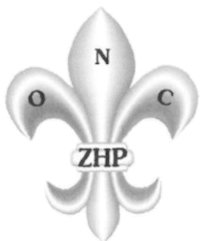
The Polish Scouting and Guiding Association is the coeducational Polish Scouting organization recognized by the World Organization of the Scout Movement and the World Association of Girl Guides and Girl Scouts. It was founded in 1918 and currently is the largest Scouting organization in Poland. The first ZHP was founded in 1916, the current one is the fourth organization with this name. It is a public benefit organization as defined by Polish law.
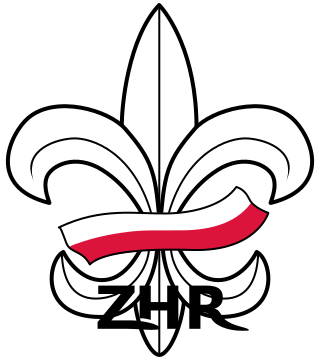
Związek Harcerstwa Rzeczypospolitej is a Polish Scouting organization founded on February 12, 1989. At present, Związek Harcerstwa Rzeczypospolitej has over 17,500 members. At present, Związek Harcerstwa Rzeczypospolitej is an associate member of the Confederation of European Scouts.
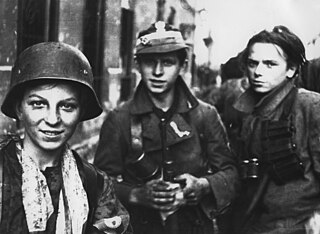
"Grey Ranks" was a codename for the underground paramilitary Polish Scouting Association during World War II.

Aleksander Kamiński, assumed name: Aleksander Kędzierski. Also known under aliases such as Dąbrowski, J. Dąbrowski, Fabrykant, Faktor, Juliusz Górecki, Hubert, Kamyk, Kaźmierczak, Bambaju – a teacher, educator, professor of humanities, co-founder of Cub Scouts methodology, scout instructor, scoutmaster, soldier of the Home Army and one of the ideological leaders of the Grey Ranks, chairman of the Presidium of the Supreme Council of the Polish Scouting Association.
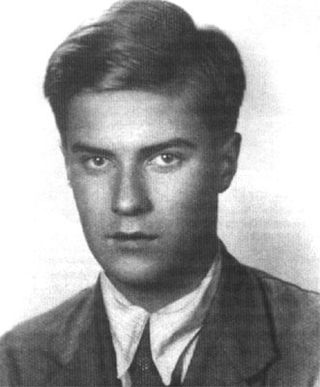
Tadeusz Leon Józef Zawadzki, assumed surname: Tadeusz Zieliński, alias "Kajman", "Kotwicki", "Lech Pomarańczowy", "Tadeusz", "Zośka" was a Polish scout instructor, scoutmaster, Home Army second lieutenant, commander of assault groups in Warsaw, one of the protagonists of Aleksander Kamiński's book Kamienie na szaniec.
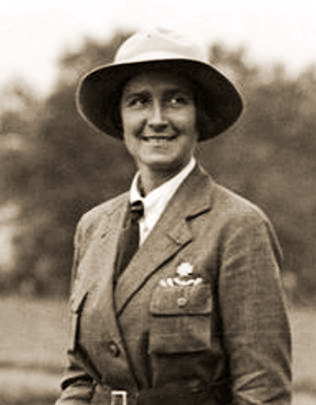
Olga Drahonowska-Małkowska, with her husband, founded scouting in Poland.
Anna Zawadzka was a Polish teacher, author of textbooks, Scoutmaster (harcmistrzyni), sister of Tadeusz "Zośka" Zawadzki and daughter of professor and chemist Józef Zawadzki.

The Order of World Scouts (OWS), founded in 1911, is the oldest international Scouting organisation. It is headquartered in England, with the administration headquarters in Italy.

A Scout leader or Scouter generally refers to the trained adult leader of a Scout unit. The terms used vary from country to country, over time, and with the type of unit.
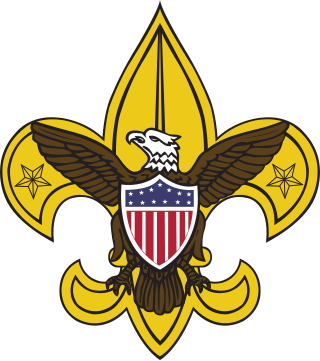
Scouts BSA is the flagship program and membership level of the Boy Scouts of America (BSA) for boys and girls between the ages of typically 11 and 17. It provides youth training in character, citizenship, and mental and personal fitness. Scouts are expected to develop personal religious values, learn the principles of American heritage and government, and acquire skills to become successful adults.

A Scout group is a local organizational structure in some Scouting organizations that consists of different age programs, gender units and/or multiple units of the same age program.

The Scouting and Guiding movement in Poland consists of about twelve independent organizations with an overall membership of about 160,000 Scouts and Guides. The largest organization by membership is Polish Scouting and Guiding Association with about 140,000 members.

The advancement program for Scouts participating in the Scouts BSA program of the Boy Scouts of America is symbolized by the earning of seven ranks. The advancement program is often considered to be divided into two phases. The first phase from joining to First Class is designed to teach the scout Scoutcraft skills, how to participate in a group and to learn self-reliance. The Scout badge is awarded when the Scout demonstrates a rudimentary knowledge of the Scouting ideals and program. Tenderfoot, Second Class, and First Class have progressively harder requirements in the areas of Scoutcraft, physical fitness, citizenship, personal growth and Scout Spirit.
The rank insignia system of the Indonesian Scouting movement Gerakan Pramuka Indonesia is by and large militarized in traditions and outfit.

The British Boy Scouts and British Girl Scouts Association is an early scouting organisation, having begun as the Battersea Boy Scouts in 1908. The organisation was renamed as the British Boy Scouts and launched as a national organisation on 24 May 1909. In association with other Scout organisations, the BBS formed the National Peace Scouts in 1910. The BBS instigated the first international Scouting organisation, the Order of World Scouts in 1911.
The Scouter's Training Award is an adult recognition of the Boy Scouts of America. This award is available across several different program areas and can be earned more than once.

International Boy Scouts, Troop 1, Japan's first Boy Scout troop, was founded in 1911, with Clarence Griffin as Scoutmaster. Despite its early multinational character the troop's original registration was with the London headquarters of The Boy Scouts Association as "British Scouts in Foreign Countries". This initial charter was due to there being no international Boy Scout office and the "nationality requirement" that was in effect at the time. In 1918, the troop's character changed considerably when the new Scoutmaster, Bro. Joseph Janning, received approval from Lord Baden-Powell to officially reorganized the troop as a mixed-nationality, or "international", troop. B-P subsequently brought the Troop's situation before the 3rd World Scout Conference where the newly formed Boy Scouts International Bureau received approval to directly register Troop 1 and, in the future, other such "international" groups. The troop was then directly registered by the Boy Scouts International Bureau and was issued the Boy Scout movement's first "mixed nationality" charter, dated October 30, 1925, signed by Baden-Powell as Chief Scout and Hubert S. Martin as Director of the new International Bureau. Within a few years the nationality requirement was abolished and, even though the Bureau maintained the direct registration of Troop 1 and other groups already registered, new groups were requested to join the national organization of the country in which they were located and no new groups were chartered. Over the years the directly chartered groups one-by-one and for varied reasons slowly disbanded and by 1955 only Troop 1 remained. The troop has been continuously active, including war years, since its first meeting held in Yokohama, Japan on October 16, 1911, and currently consists of coed sections of Beaver Scouts, Cub Scouts, Scouts, Senior Scouts, and Veteran Scouts.






































